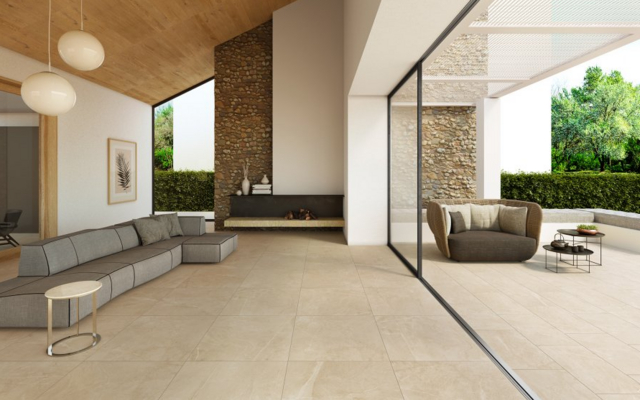Finding the Perfect Match: A Guide to Floor Tile Sizes in Australia

The proper floor tiles can completely change the look and feel of your house. For Australian homeowners, making an educated choice requires knowledge of the different kinds, sies, materials, and design trends in floor tiles.
Types of Floor Tiles
- Ceramic Tiles:
The high-heat firing of clay and other natural materials results in ceramic tiles. They come in a range of colours and patterns, are strong, and adaptable.
Advantages:
- Affordability: Accessible and reasonably priced.
- Versatility: Suitable for bathrooms and kitchens among other places.
- Maintenance: Simple to keep clean.
Considerations:
- Porosity: Moisture absorption by some ceramic tiles may render them unsuitable for outdoor use.
- Porcelain Tiles:
A subset of ceramic tile, porcelain tiles are denser, more robust, and less porous.
Advantages:
- Durability: Extremely unwearable.
- Water Resistance: Great for outdoor spaces and restrooms.
- Aesthetics: There are many finishes, including imitations of genuine stone.
Considerations:
- Cost: Generally speaking, more expensive than ordinary ceramic tiles.
- Installation: Harder to cut and install, perhaps.
- Natural Stone Tiles:
Natural stone tiles with a distinctive, opulent look include marble, granite, and travertine.
Advantages:
- Aesthetics: Uniqueness in every tile gives a natural, upscale appearance.
- Durability: Sturdy and long-lasting.
Considerations:
- Maintenance: Staining cannot be avoided without sealing and routine maintenance.
- Cost: Usually more expensive since installation and material expenses are higher.
- Glass Tiles:
Glass tiles are frequently used as accents and ornamental elements. They come in a range of colours and finishes and lend a hint of refinement.
Advantages:
- Aesthetics: Surfaces that reflect provide depth and brightness.
- Maintenance: Simple maintenance.
Considerations:
- Fragility: Cracking and chipping are more likely.
- Use: Ideal as ornamental pieces or in low-traffic locations.
Floor Tile Sizes
- Standard Sizes:
Sies of standard floor tiles are 300x300mm, 400x400mm, and 600x600mm. These are adaptable sizes that fit well with most space designs.
- Large Format Tiles:
With fewer grout lines, large-sie tiles—600x1200mm or 800x800mm—create a smooth, contemporary appearance.
Advantages:
- Aesthetics: Give a neat, roomy impression.
- Maintenance: Fewer grout lines translate into easier cleaning.
- Small Tiles:
For fine details and complex designs, small tiles—including mosaics—are ideal.
Advantages:
- Design Flexibility: Perfect for accents and pattern creation.
- Slip Resistance: Better traction is shown by more grout lines.
Considerations:
- Installation: More labour-intensive because there are more tiles and grout lines.
Choosing the Right Floor Tiles
- Room-Specific Considerations:
- Kitchens: Select long-lasting, water-resistant tiles like porcelain. Think about finishing that prevent slipping.
- Bathrooms: A must are waterproof, non-porous tiles. Slips can be avoided by the use of textured ceramic or porcelain tiles.
- Living Areas: Exquisite looks can be achieved with large format tiles or natural stone. Think about foot traffic and the general layout.
- Outdoor Areas: Select tiles made expressly for use outside. Both weather- and slip-resistant, these should be.
- Design and Aesthetic Considerations:
- Colour: A room might seem larger with light-coloured tiles, and it can seem cosier and warmer with dark tiles.
- Finish: A room can seem brighter and more glossy with glossy tiles, while matte finishes are more modern and better at hiding dirt.
- Patterns and Layouts: For more visual appeal, think of brick, diagonal, or herringbone patterns.
- Practical Considerations:
- Durability: Check the tiles' PEI (wear rating), particularly in busy locations.
- Maintenance: For bathrooms and kitchen tile in particular, use easily cleaned and maintained tiles.
- Cost: Add up the price of the tiles and the installation. Recall that durability and low maintenance can more than balance greater initial expenditures.
Latest Trends in Floor Tiles
- Natural Looks:
Popular tiles mimicking natural materials like stone and wood offer tiles durability and low maintenance requirements together with the beauty of these materials.
- Bold Patterns and Colors:
In kitchens and bathrooms in particular, geometric patterns, encaustic motifs, and vivid colours make a statement.
- Large Format Tiles:
The ability of these tiles to produce a smooth, open appearance with little grout lines keeps them in high demand.
- Sustainable Options:
Environmentally concerned homeowners are becoming more and more interested in eco-friendly tiles produced from recycled or sustainably sourced materials.
Selecting floor tiles for your Australian home requires taking into account a number of elements, such as tile kind, size, requirements particular to each area, and style tastes. Through knowledge of these factors and staying current with fashion, you can choose floor tiles that will not only improve the appearance of your house but also provide durability and usefulness. Your living area can appear and feel much different overall if you renovate a single room or your entire home.